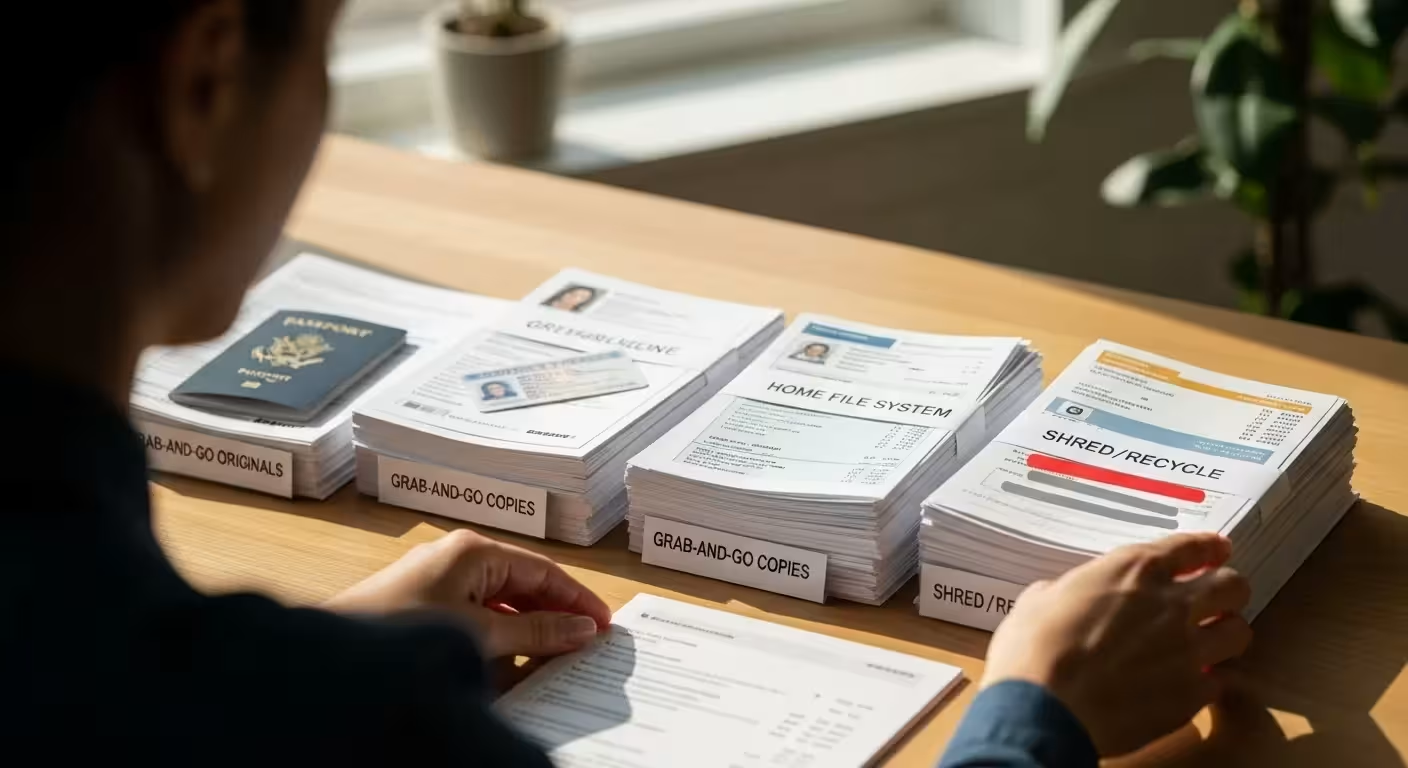
Step 2: Edit and Organize Your Documents
With your gathering box full, it’s time to bring order to the chaos. This is the “edit” phase of our organizing loop: edit -> contain -> label -> maintain. Set up a clear workspace and prepare to make some decisions. We will use a variation of the “4-pile” method, tailored for paperwork.
Create four distinct zones or piles on your table:
Pile 1: Grab-and-Go Originals. This is for irreplaceable documents that must be the original version. Think birth certificates, passports, Social Security cards, property deeds, vehicle titles, and signed legal documents like your will and power of attorney.
Pile 2: Grab-and-Go Copies. This pile is for documents where a high-quality copy is sufficient for emergency purposes. This includes driver’s licenses, health insurance cards, credit cards, and the declarations pages of your insurance policies. The originals can live in your wallet or a home file cabinet.
Pile 3: Home File System. These are important documents that you need to keep but don’t need in an immediate crisis. This pile might include past tax returns (beyond the most recent 3 years), appliance manuals, old bank statements, and supporting documentation for your taxes. These will be filed away for long-term storage, not placed in your portable file.
Pile 4: Shred or Recycle. This is for everything that is outdated or no longer needed. Expired insurance policies, old utility bills, credit card offers, and paid-off loan statements can all go here. For anything with personal information, shredding is non-negotiable to protect yourself from identity theft.
Go through your gathering box one document at a time and place it into one of these four piles. Don’t second-guess yourself. The goal is to make a quick, clear decision for each piece of paper.
A Worked Mini-Example: Sorting the Insurance Pile
Let’s say you have a stack of papers from your auto insurance company. Here’s how you might sort it using the 4-pile method:
1. The official, multi-page policy document mailed to you when you first signed up. This contains a lot of legal language. You don’t need this in a crisis. Decision: Pile 3 (Home File System).
2. The most recent “Declarations Page.” This one- or two-page summary shows your policy number, coverage amounts, and the agent’s contact information. This is pure gold. Decision: Pile 2 (Grab-and-Go Copies). Make a fresh copy if needed and place it in the pile.
3. An old, expired proof-of-insurance card from last year. This is no longer valid. Decision: Pile 4 (Shred).
4. A billing statement from two months ago that you’ve already paid. You don’t need to keep this. Decision: Pile 4 (Shred).
By applying this logic to each category, you will quickly pare down the mountain of paper into a manageable, high-value collection for your Grab-and-Go file. This editing step is what makes creating a family emergency binder so effective; it ensures you only keep what is truly essential and actionable.


















One Response
Excellent idea that must people never think about before it’s too late.